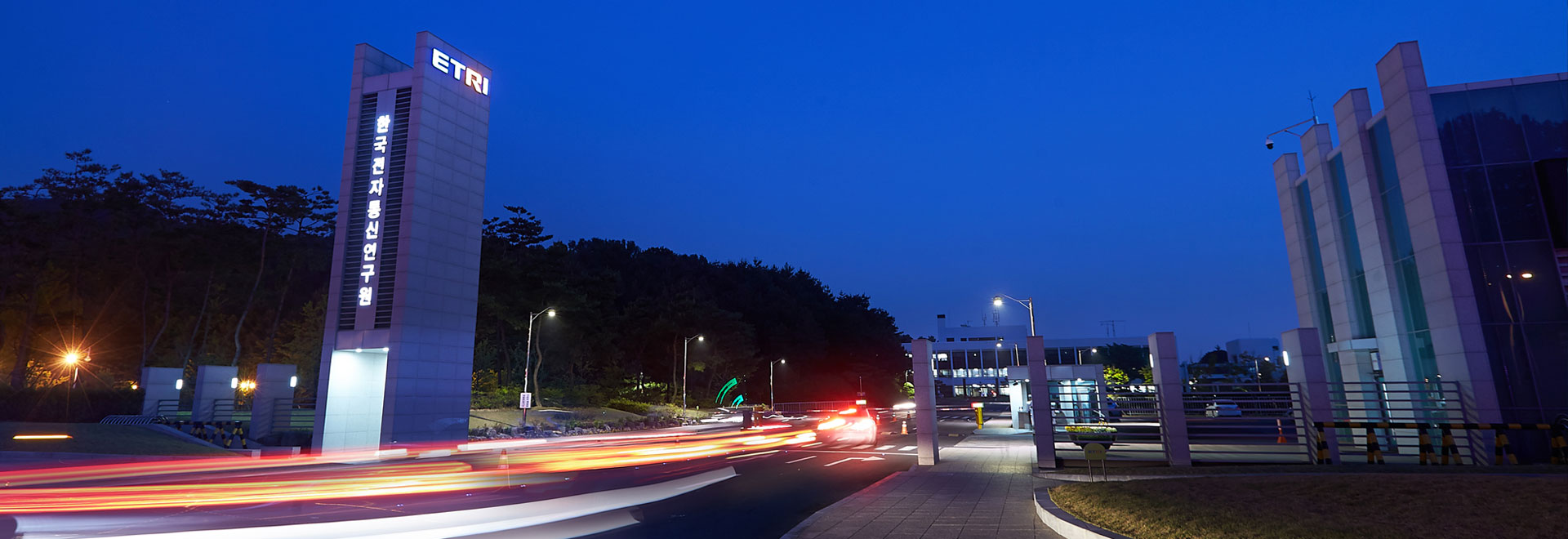
NEWS 1
Success in localization of world-class
gallium nitride power device
- Development of world-class high-output gallium nitride power device of 10W/mm
- Application of AESA radar, high frequency communication, electric vehicle power system
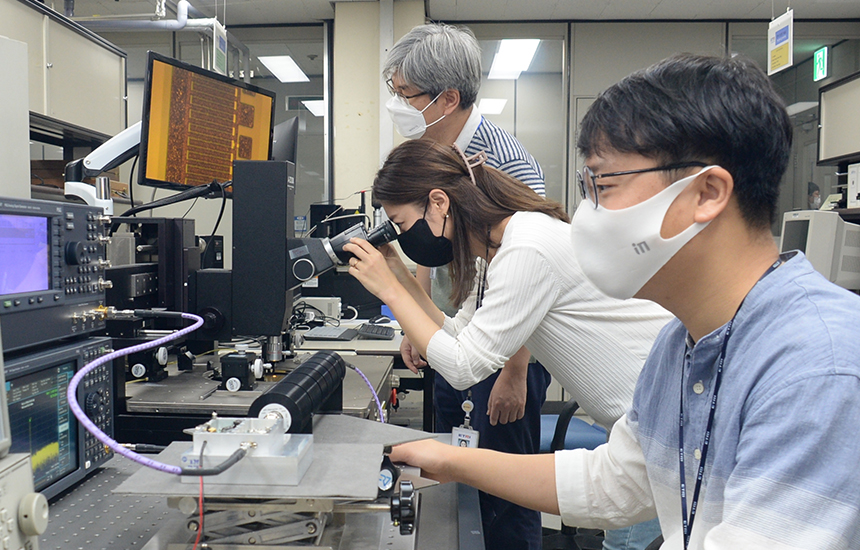
ETRI has succeeded in developing a gallium nitride (GaN) power device, which is considered a key next-generation semiconductor device, with purely Korean technology. It is expected to be of great help in enhancing the competitiveness of the Korean semiconductor industry and securing technological leadership.
ETRI researchers have developed world-class 『S-band 300 Watt (W) class gallium nitride power device technology』. Gallium nitride is advantageous for high-voltage operation with a breakdown voltage three times higher than that of silicon (Si), which is commonly used as a semiconductor device, and is suitable for improving communication system efficiency and miniaturization because it can obtain power density and power efficiency seven times higher than that of gallium arsenide (GaAs).
For those reasons, it can be applied to military radar, high-frequency communication system, and power system for electric vehicle that require high output. It is attracting attention as a next-generation semiconductor device with high industrial and military utilization in the future.
ETRI developed a world-class gallium nitride power device technology by designing a gallium nitride high electron mobility transistor (HEMT) structure that satisfies both high power and high efficiency. The researchers verified the performance of gallium nitride semiconductor device with an output power of 300W and a power density of 10W/mm or more by packaging the developed power device chip. It is a world-class level that surpasses the performance of commercial gallium nitride semiconductor device at the existing level of about 8.4 W/mm.
The prospect for the gallium nitride power device market is also bright. According to a market research institute, it is predicted that the related market will grow at an average annual rate of 59% from last year's $120 million market and reach $2 billion in 2027.
The research team plans to improve the output power of gallium nitride semiconductor devices in the future, while pursuing follow-up research to expand to the frequency to 5G 28GHz band.
Dong Min Kang, Director
RF/Power Components Research Section
(+82-42-860-1592, kdm1597@etri.re.kr)
NEWS 2
Development of the world's first fluorosulfate-based
flame retardant electrolyte additive
- Realization of safe lithium secondary battery, overcoming electric vehicle fire risk
- 2.3x flame retardancy compared to conventional additives, 160% performance of secondary batteries ↑
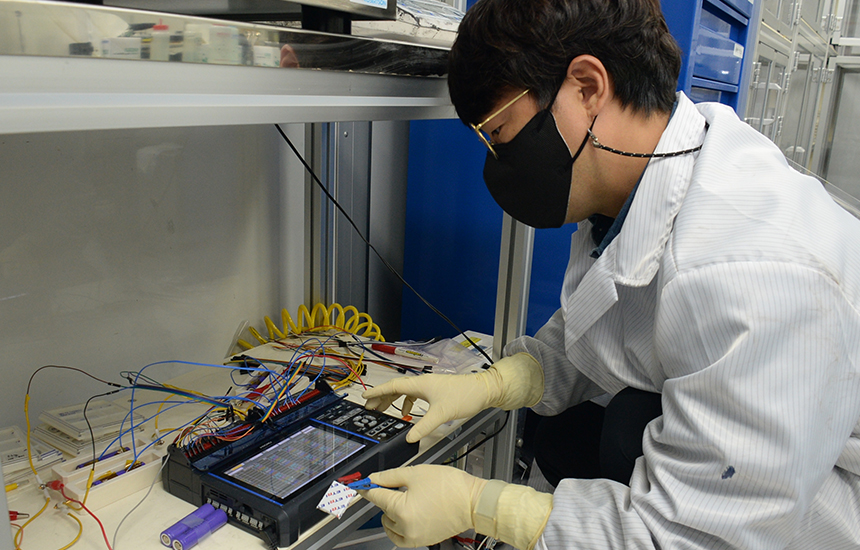
In lithium secondary battery commonly used in electric vehicles, incombustible additives are added to the electrolyte in preparation for the possibility of ignition. ETRI researchers succeeded in developing a flurosulfated-based flame retardant electrolyte additive for the first time in the world.
A lithium secondary battery is composed of four components: a cathode material, an anode material, an electrolyte, and a separator. Lithium ions from the cathode move to the anode to be charged with energy, and then move from the anode to the cathode to release energy. The electrolyte is a medium that helps lithium ions move smoothly inside the secondary battery, and the membrane serves to pass lithium ions only and prevents contact between the cathode and anode.
Electrolyte additive is a substance that is added in small amounts to electrolyte, and is the key substance that improves electrochemical stability and performance of secondary battery.
Existing commercial phosphorous based flame retardant additives have a flame retardant property, but have many limitations in use, such as requiring a large amount of input and increasing the interface resistance between the electrode and the electrolyte. ETRI researchers analyzed more than 10 types of commercial phosphorous based flame retardants through electrochemical experiments, synthesized the first fluorosulfate based flame retardant additive, and improved the disadvantages of existing phosphorous based flame retardants. As a result, compared to the electrolyte with the existing flame retardant additives, the flame retardant property was improved by 2.3 times and the performance of the secondary battery was improved by 160%. The research team explained that when the fluorosulfate based flame retardant was applied, the interfacial reaction between the electrode and the electrolyte was minimized, resulting in a significant decrease in interfacial resistance.
Also, this fluorosulfate based flame retardant additive can be used even with a small amount of the additive developed without any process change in the existing lithium secondary battery production process, making it easy to commercialize.
ETRI researchers plan to apply the flame retardant additive material developed through this research to the anode material of graphite and silicon electrodes, beyond the application of lithium transition metal oxide cathode-lithium metal anode.
Ji min Oh, Senior Researcher
Intelligent Sensors Research Section
(+82-42-860-0783, ojmhiin@etri.re.kr)
NEWS 3
Development of voice recognition technology
that understands 24 languages
- The largest number of languages in Korea on par with global companies, the highest performance voice recognition
- Securing 30 languages within the year, solving obstacles to rare language expansion
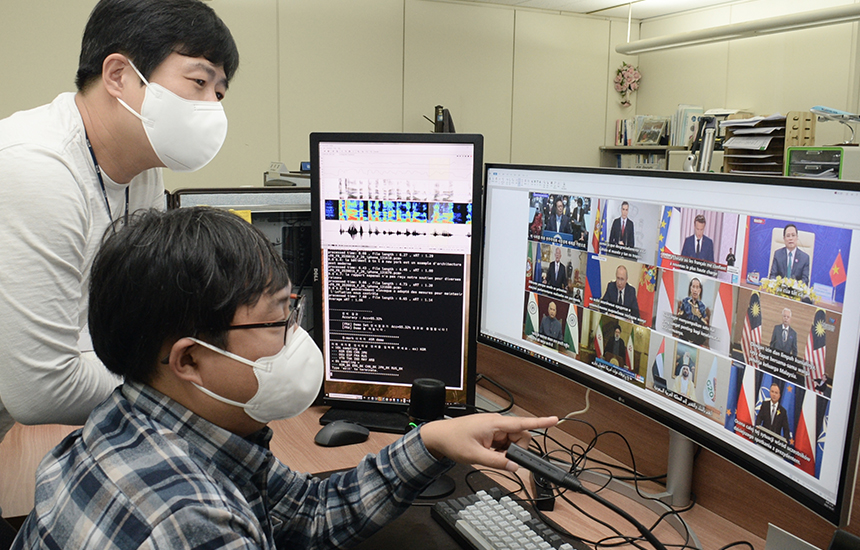
ETRI researchers have developed voice recognition technology that can recognize 24 major languages in the world, including not only Korean, English, Chinese, and Japanese, but also German, French, Spanish, and Russian. In the era of digital transformation, it is expected to be of great help in spreading various AI services such as artificial intelligence (AI) secretaries and AI tutors based on voice recognition.
To develop existing voice recognition technology, large-scale learning data was required, so it was not easy to expand multiple languages and secure voice recognition performance. The researchers solved the difficulties of language expansion through; ▲self-supervised learning ▲application of pseudo-labels ▲large capacity multilingual pre-learning model, and ▲audio data generation (TTS) augmentation technology of voice data.
Also, the research team improved the usability by improving the disadvantages of the end-to-end voice recognition technology that was commonly used in the past. The problem of slow response speed has been improved to enable real-time processing by developing streaming inference technology. In addition, hybrid longitudinal recognition technology has been developed and applied to facilitate voice recognition for specific domains such asmedicine, law, and science and technology.
After developing longitudinal voice recognition technology in 2020, ETRI transferred voice recognition technology to more than 30 domestic and foreign companies. Through this, companies are using ETRI's voice recognition technology for various AI services such as ▲minutes preparation ▲subtitle interpretation ▲kiosk ▲medicine and education, and ▲AI contact center.
The research team announced that they plan to expand the scope of use of voice recognition technology and promote commercialization by applying new technologies such as the expansion of multiple languages and resolution of response speed delay.
In particular, within this year, the supported languages will be expanded to 30 or so, and commercialization will be actively promoted for Southeast Asia, South America, and the Arab countries through participation in domestic and foreign exhibitions and corporate briefing sessions.
Sanghun Kim, Principal Researcher
Integrated Intelligence Research Section
(+82-42-860-5141, ksh@etri.re.kr)
NEWS 4
Digital twins help establish government policies
- Introduced demonstration services such as efficient operation of ‘Eowling’, a public bicycle in Sejong City
- It will be the first step towards realizing a data-based digital platform government
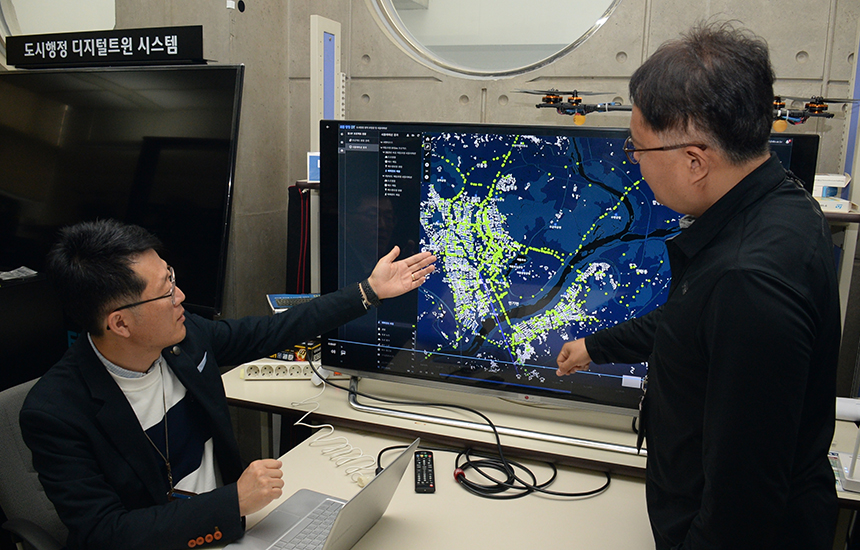
ETRI researchers are making headlines by applying “digital twin” technology to support local governments' policy establishment. ETRI, along with Sejong City, launched a digital twin simulation demonstration service for three months from October to establish policies scientifically.
There are three digital twin simulation demonstration services developed by ETRI: ▲Efficient operation of public bicycles in Sejong City ▲Efficient relocation of public bicycles ▲Prediction of major social indicators linked to digital twin simulation.
Digital twin technology is a technology that can discover, prepare for, or solve problems in the real world through simulation in virtual space using real data. Simulations through digital twin technology require accurate data to produce reliable results, but in reality, due to limitations such as accessibility to personal information, digital twin technology could only be used in certain parts.
ETRI researchers have developed and supplemented core technologies for urban administration digital twin required to support scientific policy decisions, such as ▲agent-based urban model modeling ▲policy combination tool SW ▲delta simulation engine.
The demonstration service provided this time not only supports policy establishment, but also provides policy establishment and operation personnel with simulation results in the direction of policy operation in connection with changes in the situation in reality. This is the first time to support the establishment and operation of policies using digital twins in a real environment.
In the future, the research team plans to add a demonstration service to improve the operation efficiency of 'Auto Clean Net', a garbage disposal system in Sejong City, and collect opinions from policy managers on these three demonstration services. Through this, it plans to promote follow-up research to implement a digital twin simulation system that can be used continuously.
Yung Joon Jung, Director
Intelligent Simulation & Platform Research Section
(+82-42-860-6397, jjing@etri.re.kr)